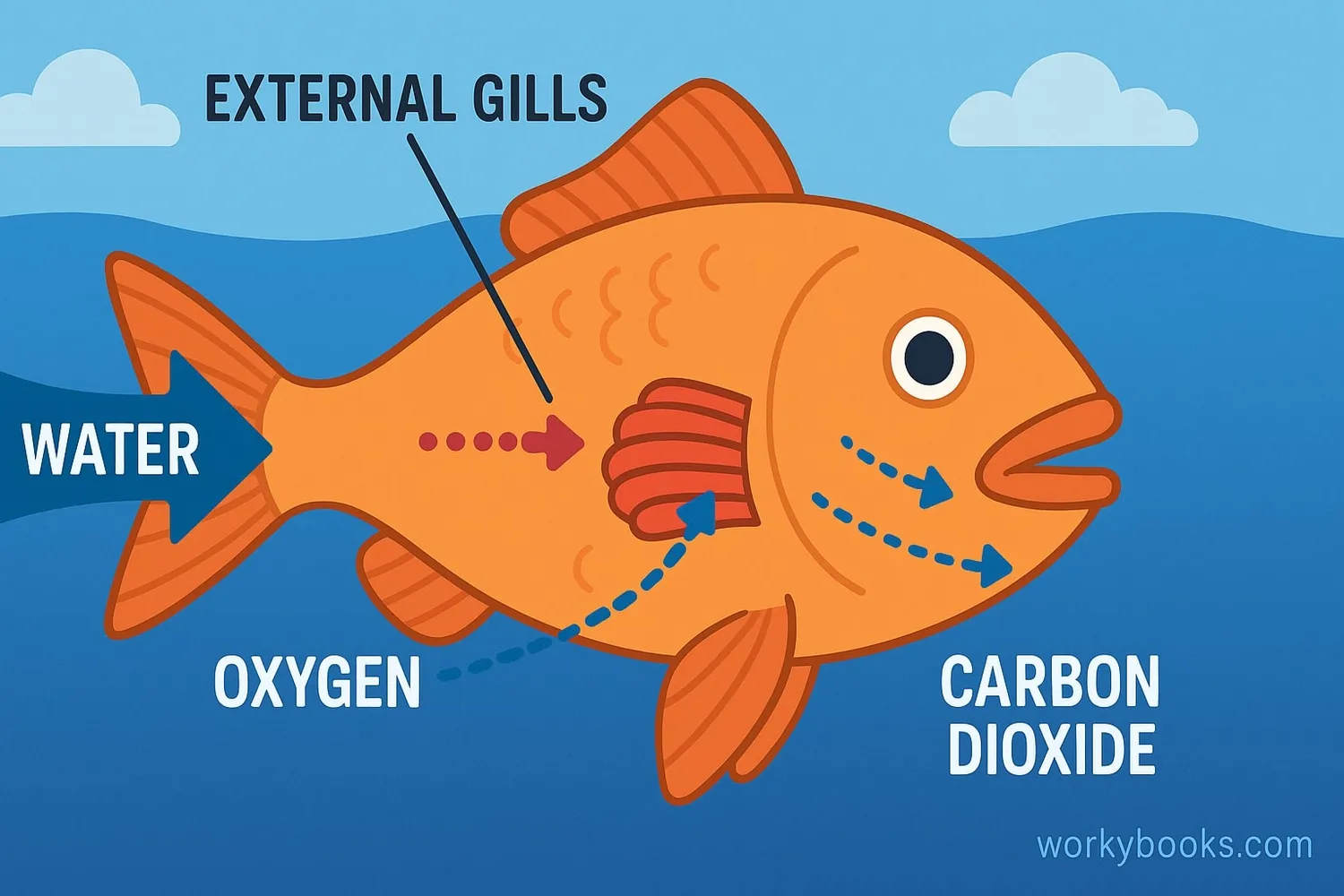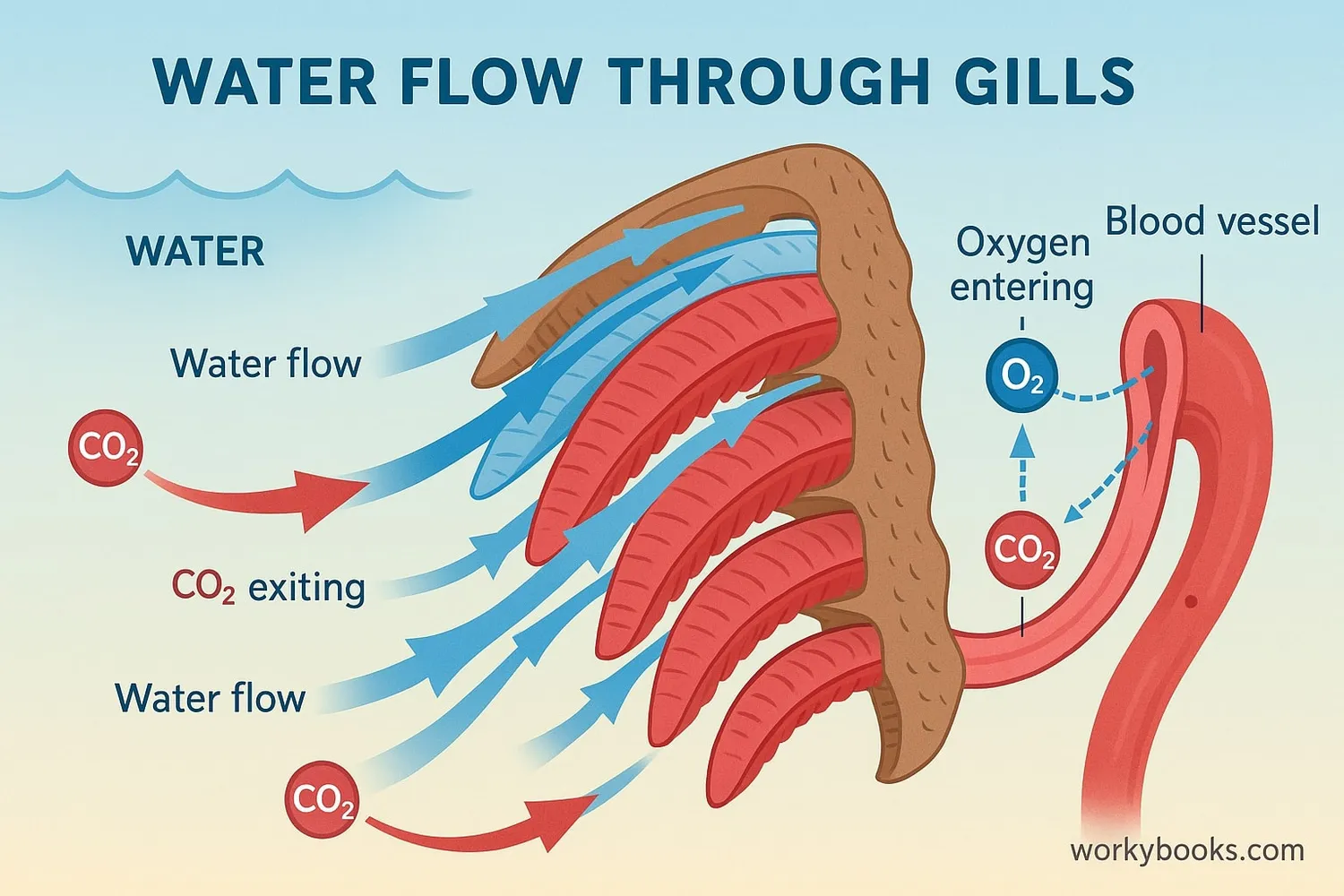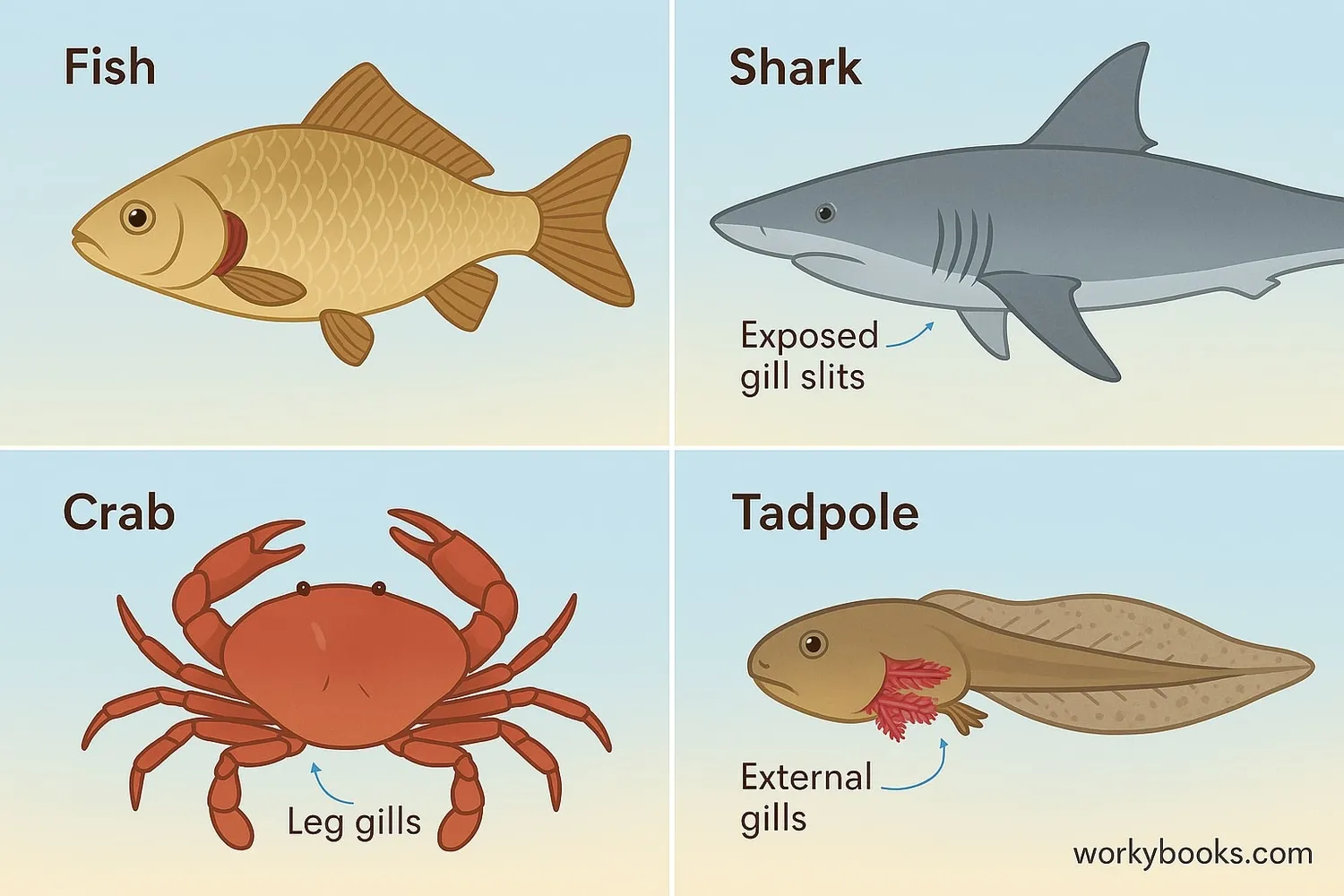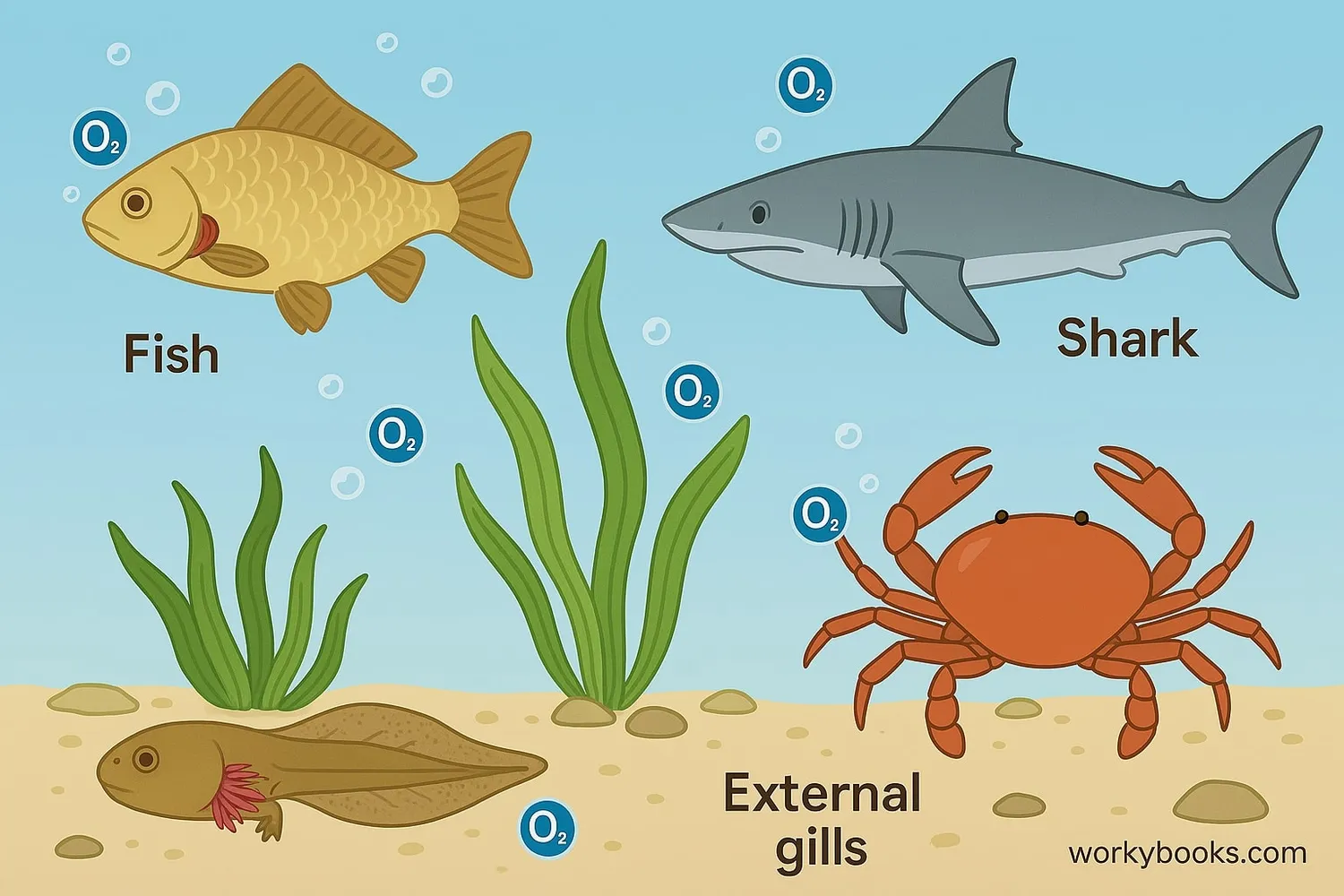Gills - Definition, Examples, Quiz, FAQ, Trivia
Discover how fish and other aquatic animals breathe underwater
What are Gills?

Gills are special breathing organs that allow animals to get oxygen from water. Just like we have lungs to breathe air, fish and many other aquatic animals have gills to breathe underwater.
Definition: Gills are feathery organs made of thin filaments that extract oxygen from water and release carbon dioxide. They're found on the sides of fish heads and on other aquatic animals.
Did You Know?
Some fish can get up to 85% of the oxygen from water passing through their gills!
How Gills Work

Gills work through a process called gas exchange. Here's how fish breathe underwater:
Water Intake
Fish take water in through their mouth
Water Flow
Water flows over the gill filaments
Oxygen Absorption
Oxygen from water enters the bloodstream
Carbon Dioxide Release
Carbon dioxide leaves the blood and enters the water
Water Exit
Water flows out through gill slits
Gills are so efficient because:
• They have a large surface area for maximum gas exchange
• Blood flows in the opposite direction to water (countercurrent exchange)
• They're made of very thin membranes that allow gases to pass through easily
Adaptation Fact!
Gills work because water contains dissolved oxygen - about 1% compared to air's 21%, but gills are specially adapted to extract it efficiently.
Gills in Different Animals

While all gills perform the same function, they look different in various aquatic animals:
Fish
Gills protected by a bony cover called an operculum
Sharks and Rays
Multiple exposed gill slits without a protective cover
Crustaceans
Gills located at the base of legs or inside body cavities
Amphibians
Tadpoles have external gills; some salamanders keep gills as adults
Interesting Example
Mudskippers are fish that can breathe through their gills when in water AND breathe air through their skin when on land!
Why Gills are Important

Gills are vital adaptations that allow life in aquatic environments:
Underwater Breathing
Enable animals to extract oxygen from water instead of air
Efficient Oxygen Use
Specialized to work with water's lower oxygen concentration
Waste Removal
Help remove carbon dioxide and other wastes from the body
Without gills:
• Fish and other aquatic animals couldn't survive underwater
• Aquatic ecosystems would collapse
• Many food chains would be disrupted
Gills represent one of nature's most remarkable adaptations for life in water!
Gills Quiz
Test your knowledge about gills with this fun quiz! Answer all 5 questions to see how much you've learned.
Frequently Asked Questions
Here are answers to some common questions about gills:
Fun Gills Trivia
Discover some amazing facts about gills and underwater breathing!
Surface Area
The total surface area of gills in a fish can be up to 10 times greater than the surface area of its body!
Evolutionary Link
Scientists believe the bones in our ears evolved from structures that originally supported fish gills!
Water Temperature
For every 10°C rise in water temperature, fish need twice as much oxygen, making gill function more challenging.
Deep Divers
Some deep-sea fish have special gills that can extract oxygen even from low-oxygen environments at great depths.


